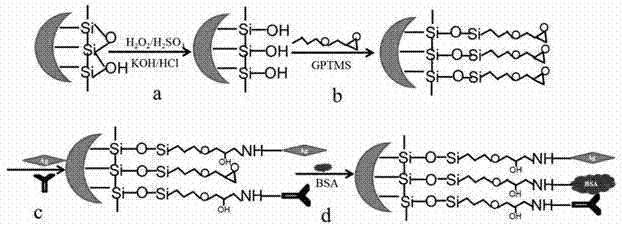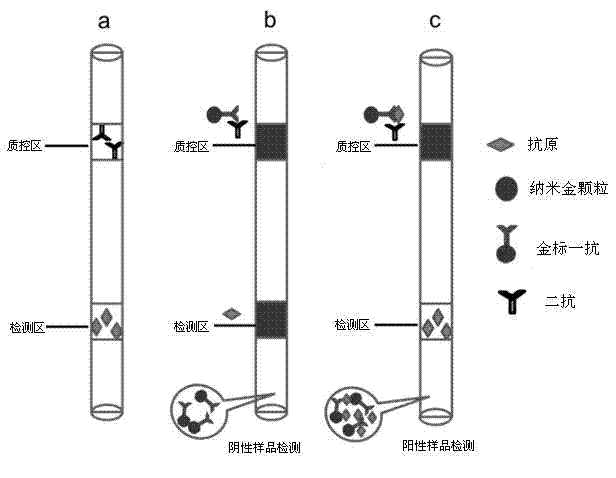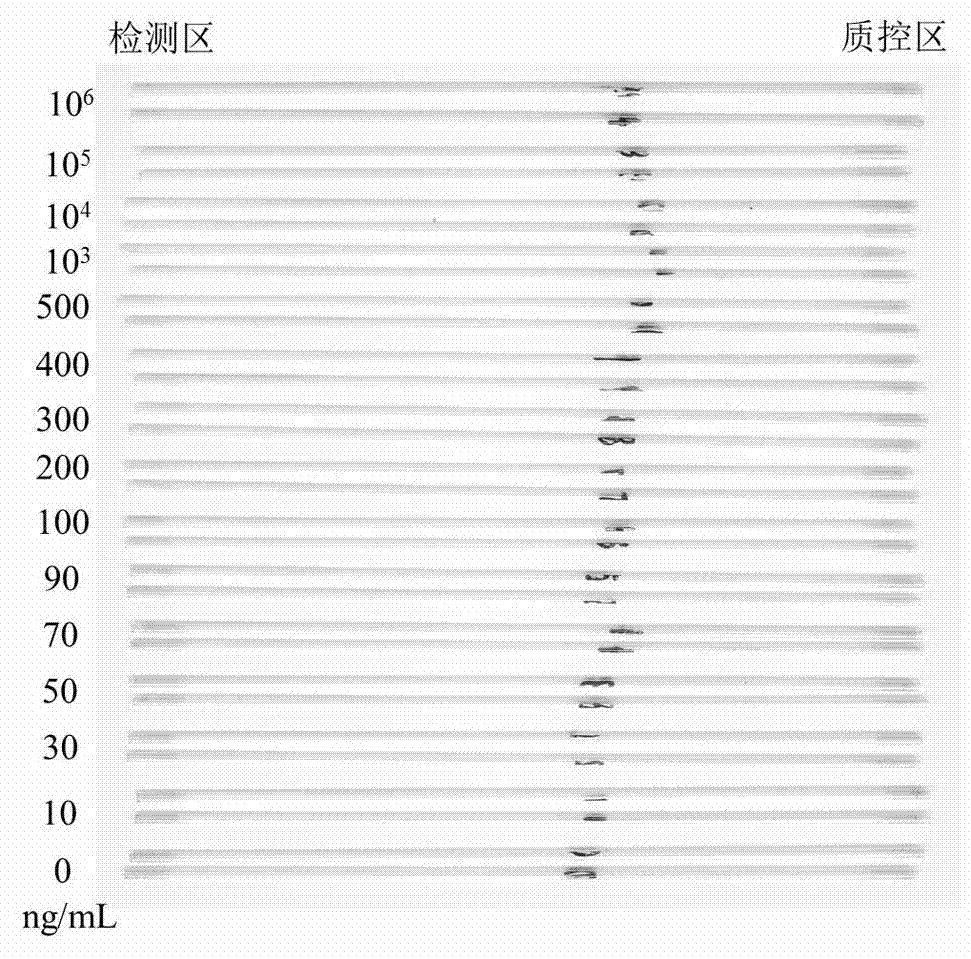Capillary immunity-chromatography rapid detection method for parvalbumin in aquatic products
A technology of immunochromatography and detection method, which is applied in the detection field of parvalbumin, can solve the problems such as poor results, and achieve the effects of improving detection accuracy, facilitating storage, and reducing the effect of cross-binding
- Summary
- Abstract
- Description
- Claims
- Application Information
AI Technical Summary
Problems solved by technology
Method used
Image
Examples
preparation example Construction
[0068] Preparation of anhydrous toluene: Add 15 g of anhydrous sodium sulfate to 300 mL of toluene (analytical pure) and let it stand for 10 hours, remove the anhydrous sodium sulfate by suction filtration, then add 2 g of metallic sodium wire, and add 0.5 g of benzophenone as an indicator , replace the air in the reflux device with nitrogen, and heat to reflux for 2 hours to make the solution turn blue; stop heating, change to a distillation device, and then distill at atmospheric pressure to collect the distillate at 111±1°C to obtain anhydrous toluene.
[0069] Dissolve GPTMS and triethylamine in anhydrous toluene to obtain a modification solution, so that the final concentration of GPTMS is 8 vol%, and the final concentration of triethylamine is 1 vol%, and immerse the capillary obtained in step (1) in the modification solution at room temperature React in a dry environment for 25 hours, drain the modification solution in the capillary, keep it in a dry environment at room ...
Embodiment 1
[0104] 1. Treatment of samples to be tested: Mix fish (turboscus purchased from Jusco Supermarket (Qingdao)) and Tris-HCl (pH 7.5) at a ratio of 1:2 (w / v) to homogenate, and homogenate After the final sample was filtered, it was heated in a water bath at 95°C for 25 minutes, centrifuged at 3800g for 5 minutes, and the supernatant (extracted parvalbumin) was collected as a test sample.
[0105] 2. Sample detection: Mix the colloidal gold-labeled primary antibody prepared in Section 4.1 (gold-labeled rabbit anti-parvalbumin) with the test sample at a volume ratio of 1:1 to obtain a mixture, and inject 5 μL of the mixture into the immunochromatographic capillary After standing still for 4 minutes, use a pipette to push the mixed solution to move down to the quality control area of the immunochromatography capillary, and also stay in this area for 4 minutes, drain the excess mixed solution out of the immunochromatography capillary, and then The immunochromatographic capillary wa...
Embodiment 2
[0107] 1. Treatment of samples to be tested: Mix fish (turboscus purchased from Jusco Supermarket (Qingdao)) and Tris-HCl (pH 7.5) at a ratio of 1:3 (w / v) to homogenate, and homogenate After the final sample was filtered, it was heated in a water bath at 100°C for 5 minutes, centrifuged at 3800g for 5 minutes, and the supernatant (extracted parvalbumin) was collected as a test sample.
[0108] 2. Sample detection: Mix the colloidal gold-labeled primary antibody prepared in Section 4.1 (gold-labeled rabbit anti-parvalbumin) with the test sample at a volume ratio of 1:1.5 to obtain a mixture, and inject 15 μL of the mixture into the immunochromatographic capillary After standing still for 4 minutes, use a pipette to push the mixed solution to move down to the quality control area of the immunochromatography capillary, and also stay in this area for 4 minutes, drain the excess mixed solution out of the immunochromatography capillary, and then The immunochromatographic capillary...
PUM
 Login to View More
Login to View More Abstract
Description
Claims
Application Information
 Login to View More
Login to View More - R&D
- Intellectual Property
- Life Sciences
- Materials
- Tech Scout
- Unparalleled Data Quality
- Higher Quality Content
- 60% Fewer Hallucinations
Browse by: Latest US Patents, China's latest patents, Technical Efficacy Thesaurus, Application Domain, Technology Topic, Popular Technical Reports.
© 2025 PatSnap. All rights reserved.Legal|Privacy policy|Modern Slavery Act Transparency Statement|Sitemap|About US| Contact US: help@patsnap.com



